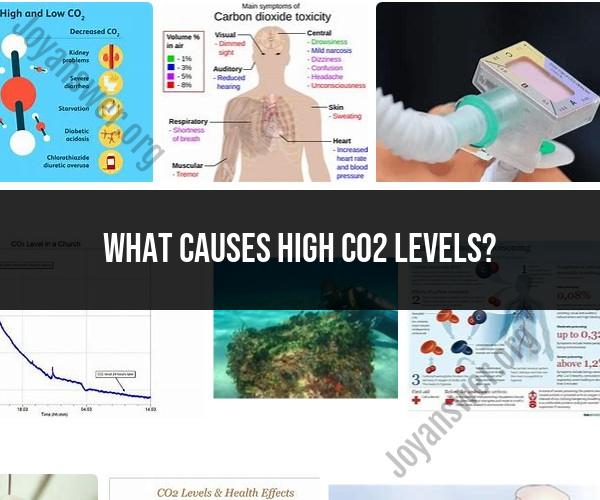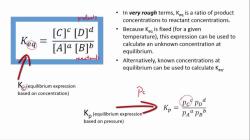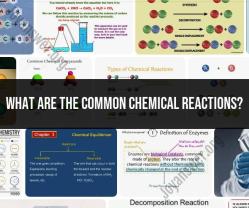What causes high CO2 levels?
High levels of carbon dioxide (CO2) in the atmosphere can result from various natural and human activities. Here are some of the primary sources and causes of high CO2 levels:
Natural Sources:
Volcanic Activity: Volcanic eruptions release significant amounts of CO2, along with other gases and particulates, into the atmosphere. While volcanic emissions can be substantial during eruptions, they are relatively infrequent events on a global scale.
Respiration: Both animals and plants respire, releasing CO2 as a byproduct of metabolism. This natural respiration process contributes to atmospheric CO2 levels.
Decomposition: When organic matter, such as dead plants and animals, decays or decomposes, it releases CO2 into the atmosphere.
Human-Induced Sources:
Fossil Fuel Combustion: The burning of fossil fuels, including coal, oil, and natural gas, for energy production and transportation is the most significant human-related source of CO2 emissions. This includes emissions from power plants, automobiles, and industrial processes.
Deforestation: The clearing of forests for agriculture, urban development, and other purposes reduces the planet's capacity to absorb CO2 through photosynthesis. When forests are removed or degraded, the carbon stored in trees and vegetation is released into the atmosphere.
Land Use Changes: Beyond deforestation, changes in land use, such as converting forests into agricultural land or urban areas, can lead to increased CO2 emissions. Soil disturbance during land development can also release stored carbon.
Industrial Processes: Certain industrial activities, such as cement production and chemical manufacturing, release CO2 as a byproduct. These emissions are known as process emissions.
Agriculture: Agricultural practices, including rice cultivation and livestock farming, can result in the release of methane (CH4) and nitrous oxide (N2O), both of which are potent greenhouse gases. Additionally, the use of synthetic fertilizers can contribute to CO2 emissions.
Effects of High CO2 Levels:
Global Warming: Elevated CO2 levels in the atmosphere contribute to the greenhouse effect, trapping heat and causing global temperatures to rise. This leads to climate change, with associated impacts such as more frequent and severe heatwaves, altered precipitation patterns, and rising sea levels.
Ocean Acidification: A significant portion of the excess CO2 in the atmosphere is absorbed by the world's oceans. This causes ocean water to become more acidic, which can harm marine ecosystems, particularly coral reefs and organisms with calcium carbonate shells or skeletons.
Health Effects: High levels of CO2 in indoor environments, such as poorly ventilated buildings, can lead to health problems, including headaches, dizziness, and impaired cognitive function. However, outdoor atmospheric CO2 levels are not typically high enough to pose direct health risks.
Impact on Ecosystems: Changes in CO2 levels can affect plant growth and ecosystems. Some plants may benefit from increased CO2, while others may suffer, altering the balance of plant communities and ecosystems.
Feedback Loops: Elevated CO2 levels can trigger feedback loops that exacerbate climate change. For example, thawing permafrost can release stored methane, a potent greenhouse gas, into the atmosphere, further accelerating warming.
Efforts to mitigate high CO2 levels include transitioning to cleaner energy sources, reducing deforestation and promoting afforestation and reforestation, improving energy efficiency, and adopting sustainable agricultural practices. International agreements like the Paris Agreement aim to limit global temperature increases by reducing CO2 emissions and addressing climate change.
Unpacking the Causes of High CO2 Levels: Implications and Effects
High carbon dioxide (CO2) levels in the atmosphere are a major cause of climate change. CO2 is a greenhouse gas, which means that it traps heat in the atmosphere. As CO2 levels increase, the planet warms.
There are two main causes of high CO2 levels:
- Human activities: Human activities, such as burning fossil fuels for energy and deforestation, release CO2 into the atmosphere.
- Natural processes: Natural processes, such as volcanic eruptions and wildfires, can also release CO2 into the atmosphere. However, human activities are the primary cause of high CO2 levels in the atmosphere today.
High CO2 levels have a number of implications and effects, including:
- Climate change: CO2 is the main greenhouse gas that is causing climate change. Climate change is already having a number of negative effects, such as more extreme weather events, rising sea levels, and melting glaciers.
- Ocean acidification: CO2 dissolves in seawater and forms carbonic acid, which lowers the pH of the ocean. Ocean acidification is making it more difficult for marine life to survive and reproduce.
- Human health: High CO2 levels can have a number of negative effects on human health, including respiratory problems, heart disease, and stroke.
Elevated CO2 Levels: Exploring the Underlying Factors
There are a number of underlying factors that contribute to elevated CO2 levels. These include:
- Population growth: The global population is growing rapidly, which is leading to increased demand for energy and resources. This is leading to increased emissions of CO2 and other greenhouse gases.
- Economic growth: Economic growth is also leading to increased emissions of CO2 and other greenhouse gases. This is because economic growth is often associated with increased energy consumption and industrial production.
- Energy consumption: The global energy consumption is increasing rapidly. This is leading to increased emissions of CO2 and other greenhouse gases, especially from the burning of fossil fuels.
- Deforestation: Deforestation is the clearing of forests for other uses, such as agriculture and development. Forests play an important role in absorbing CO2 from the atmosphere. Deforestation reduces the amount of CO2 that is absorbed from the atmosphere, which contributes to elevated CO2 levels.
Understanding the Triggers for Increased Carbon Dioxide Levels
The main trigger for increased carbon dioxide levels is the burning of fossil fuels. Fossil fuels, such as coal, oil, and natural gas, are burned to generate electricity, power vehicles, and produce heat. When fossil fuels are burned, they release CO2 and other greenhouse gases into the atmosphere.
Other triggers for increased carbon dioxide levels include:
- Deforestation: Deforestation releases CO2 into the atmosphere when trees are cut down and burned.
- Industrial processes: Industrial processes, such as cement production and metal smelting, also release CO2 into the atmosphere.
- Land use changes: Land use changes, such as converting forests to agricultural land, can also release CO2 into the atmosphere.
To reduce carbon dioxide levels, it is important to reduce the burning of fossil fuels and to protect and restore forests. Other ways to reduce carbon dioxide levels include developing and using renewable energy sources, improving energy efficiency, and reducing deforestation.











